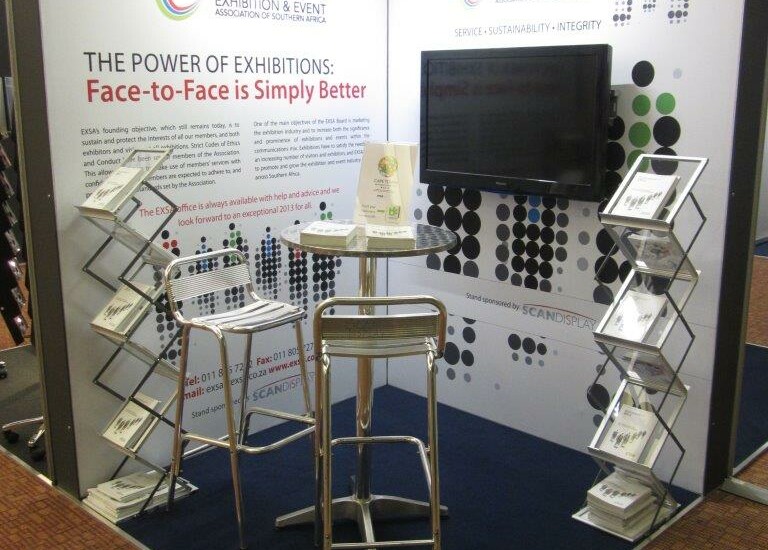Exhibiting at trade shows and exhibitions is often incorrectly considered as a meaningless activity that is solely purposed for an organisation to “show face” and gather more social media fans and followers. This is an unfortunate misconception that misleads people from realising that, in actual fact, participation in trade shows and exhibitions indicates the existence and implementation of a premeditated strategy that is meant to bring in more business in the form of leads. But who are the leads for?
According to Dana Tilghman, Strategic Meetings and Events Manager for Minitab, there is often confusion as to who should own the leads. Do they belong to Sales or Marketing? This confusion slows down the process of following up on the leads, leaving them to collect dust for a good while until they’re of little worth. Marketing and Sales should come together and divvy out responsibilities and ownership. Who further qualifies the leads? Who makes the initial contact with the lead? Who is responsible for tracking the lead and ensuring there is follow up?
Once the above is successfully allocated, there needs to be a system or a criterion that qualifies a lead.
1. Qualifying a lead
As soon as you begin planning for a trade show or exhibition, sit down with your sales department managers and ask them what information needs to be obtained from each lead. In addition to attendees’ contact details, most salespeople need information about which products attendees are interested in, company size, purchasing power, buying plans, product perception, etc.
But perhaps they also need to know if the attendee purchased from the company in the past, if he or she had a good or bad experience, or what a prospect thinks about your competitor’s products. Granted, a four-page lead form is overkill, but make the most of attendees’ time and that of your salespeople by creating a succinct lead form that gathers the data your sales team requests.
Also ask sales managers to help tweak your lead-qualifying criteria. What do they consider a hot lead, versus one that’s medium hot or cold? And what follow-up process can they commit to for each type of lead? For example, can they follow up on hot leads within three days of show close, medium leads within two weeks, and cold leads within six months? You have to make sure that sales and marketing are operating with the same definition of the word “quality” – and are on the same page in terms of follow-up expectations.
2. Lead capturing techniques
Whether you’re using a paper lead form or an online capture-and-management system, your lead-capture method should have the following main functions: 1) multiple-choice questions, and 2) a way to take notes.
Multiple-choice questions allow your exhibition stand staff to go through the standard qualifying questions easier and faster. These types of questions further allow exhibition stand staff to engage in more casual conversations that allow them to obtain information about specific product interests, product awareness, competitive-product perspectives, etc. This information can then be noted on a form.
After the trade show, the marketing department can use the answers to the multiple-choice questions to qualify the leads into basic hot, warm, and cold piles, and then read through the notes to further qualify them. Once salespeople receive the qualified and sorted leads, they can quickly hone in on the notes. Even the slightest bit of personal info about a specific lead and his or her needs can help salespeople move the lead closer to a sale.
3. Post trade / exhibition show follow-up
During your planning process, parameters for how long salespeople have to follow up on A leads, B leads, and so forth should be firmly established. This will then grant marketing better direction when creating an organised strategy for the lead follow-up process.
For example, after marketing has qualified and sorted the leads, how will they be distributed to salespeople, and which salespeople will receive which leads? That is, will the best salespeople get the highest-quality leads, or will the leads be distributed equally among the team, or equally according to regions? Additional to that, you need to make sure that there is someone who will track this follow-up and ensure that attendees have received the information they requested.
According to Peter LoCascio, founder at Trade Show Consultants, the following questions are worth considering when compiling your lead generation strategy:
- Was there some form of borrowed interest tactic used like a contest, etc?
- Are they in fact sales leads or inquiries?
- Who managed the leads when they were brought back to the home office?
- How were your exhibition stand staff trained on interviewing prospects on the stand and filling out lead forms?
- Is the trade show effort considered a marketing, public relations, advertising, sales support, or sales promotional tool?
- Does anyone back at the home office contact the trade show leads to confirm they are satisfied with the company’s response?
The information in the above paragraphs should give all exhibitors a good basis on how to successfully capture and collect leads at trade shows and exhibitions.
Article supplied by SSQ Exhibitions
Information retrieved from the following sources:
- Dana L. Tilghman – comments on the Exhibitor’s “Why do you think companies fail at following up on the leads they collect at a tradeshow?” article
- Peter LoCascio – comments on the Exhibitor’s “Why do you think companies fail at following up on the leads they collect at a tradeshow?” article
- Linda Musgrove – author of “Lead Management Q & A”







